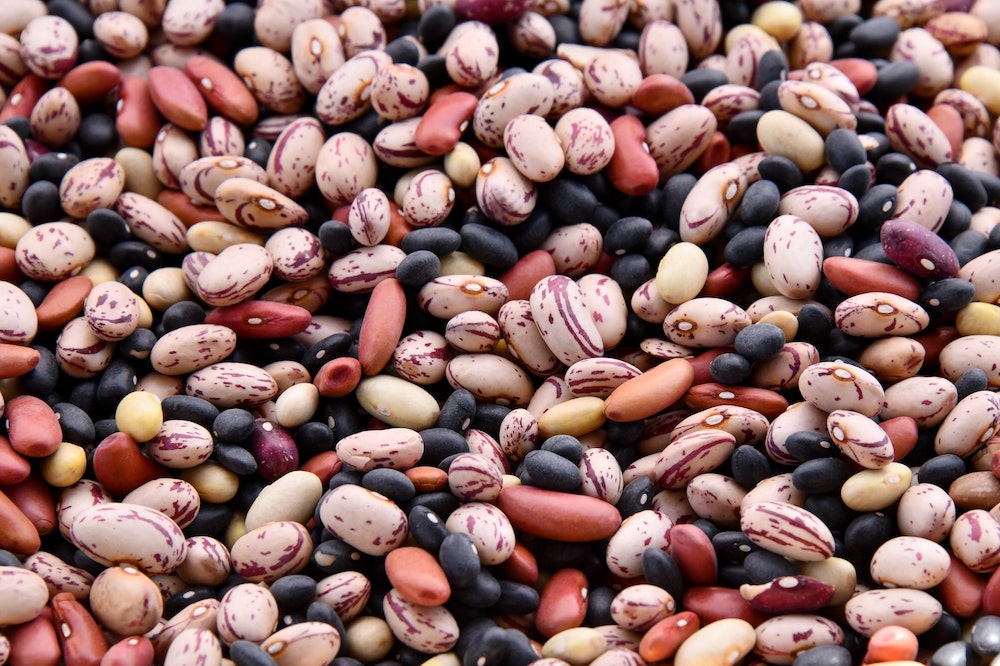Legumes on the Keto Diet: Are They Good or Bad?

Yes! Based on the tables below, protein, fiber, and other vitamins and minerals are found in legumes (1).
They are also cheap and can be taken at any time, irrespective of the diet being taken, but they should be chosen carefully if you are on a low-carb diet.
The issue with legumes is that they contain carbohydrates.
While they do provide a rich content of fiber, most legumes are fairly high in digestible carbon and should be restricted to this ketogenic diet (2).
It does not mean that you cannot eat legumes again, but you should be more careful about how much you take daily or which type of low-carb beans you take.
Fortunately, there are a lot of options to consume legumes only occasionally without necessarily shooting up the amounts of carbohydrates in a ketogenic diet plan.
To get started, here are some guidelines for introducing legumes into your ketogenic diet plan.
How to Incorporate Legumes Into Your Ketogenic Diet
First, before you can look for the legumes that you can eat while on ketogenic diets, you need to know what the ketogenic diet entails.
The ketogenic diet means that your body receives the energy it needs through fats instead of carbohydrates.
It is considered a fat-rich, carbohydrate-poor diet, ideal for those looking to maintain low-carb intake.
When you go on this diet, the body gets into a metabolic process referred to as ketosis, which helps in burning fat instead of carbs.
The most well-liked diet is the ketogenic diet, though there are other diets that can help you enter ketosis, including those that focus on low-carb beans.
Most significantly, the overall strategy of the keto diet is to make your body use fat as fuel by limiting daily carbohydrates to 50 g or less, focusing on net carbs.

Recommended Vegetables and Low-carb Beans and Legumes
Other foods that are categorized as low-digestible carbohydrates and high in fiber include black beans, kidney beans, and green beans (3).
Sesame seeds: They are high in protein, minerals, vitamins, folate, and iron, making them a great addition to a low-carb diet, especially for those who want to avoid added sugar.
Notwithstanding, these three types of beans can be deemed nutritious and permissible to be consumed on any ketogenic diet, though one’s daily absorption must be moderated so as not to undermine ketosis.
A user can thus know how many low-carb beans they can eat daily courtesy of the nutrition facts that are usually provided on the package alongside the carbohydrate content.
Black beans: 5. Kidney beans: 5g of carbohydrates per one cup serving.
Pinto beans: 5.4 g of carbohydrates per one cup serving makes it easier to include in a low-carb diet.
Other vegetables, such as beans and legumes, that fall under the high-carb category
Even though all beans and legumes contain a low amount of carbs, there are some that contain more carbs than others.
The ones with higher amounts of carbs are considered to be no-go foods on the strict keto diet, especially high-carb options.

High-Carb Legumes to Limit or Avoid on a Keto Diet
While legumes are rich in protein, fiber, and essential nutrients, not all of them align with the strict carbohydrate restrictions of a ketogenic diet.
Many popular legumes contain high amounts of digestible carbs that can disrupt ketosis if consumed in excess.
Below is a list of legumes that are best limited or avoided to maintain your low-carb goals.
You should avoid the following types of beans and legumes because they are high in carbohydrates:
- Black-eyed peas: Or approximately 11 grams of carbs for each and every one-cup serving.
- Chickpeas: One cup serving contains 19 grams of carbs.
- Cranberry beans: Carbohydrate 22g/serving/cup
- Cowpeas: 10. There are 7 grams of carbs in it per one-cup serving.
- Fava beans: high in carbs and should be consumed in moderation on a low-carb diet. 1/2 cup contains a combined total of 18 grams of carbs, which is significant for those trying to eat on the keto diet.
- Garbanzo beans: Found: Average for one cup serving: 15 grams of carb
- Great northern beans are high in carbs and should be limited to a strict keto diet. Per one cup serving, there are 11 grams of net carbs from certain low-carb legumes.
- Lentils are generally high in carbs and should be consumed cautiously on the keto diet, especially if you're trying to avoid high-carb foods. Contain 22 grams of carbs per one-cup serving, which may be too high for those strictly following a low-carb diet.
- Mung beans: 9. Low carbohydrate content, which is 0.7 grams for one cup.
Be careful with carbohydrates—except for He; there are plenty of them in beans.
All the above legumes can be taken on a keto diet, but with a lot of caution as to portion sizes taken.
However, they do contain carbohydrates, which, in addition to fiber, pose a problem for some people to digest (4).
If you have sensitive stomachs or screwed up digestive tracts, eating too much of the legumes is bad for your health (5).
As a general rule, if you are following a keto diet, you might want to keep an eye on your carbohydrate intake to avoid complications like these.
Final Remarks
Legumes can be a valuable and nutritious addition to a ketogenic diet when consumed thoughtfully. While they provide essential nutrients like protein, fiber, and vitamins, their carbohydrate content means portion control is key.
Opt for low-carb varieties like black beans or green beans, and always monitor your daily carb intake to stay in ketosis.
By choosing wisely and enjoying legumes in moderation, you can reap their health benefits without compromising your low-carb goals. Adjust your portions, experiment with recipes, and find a balance that works for your keto lifestyle!
🥑 Start exploring low-carb options today to enjoy their benefits while staying in ketosis! 🌟
FAQs
Are beans keto-friendly, or should they be avoided on a low-carb diet?
While legumes are good sources of protein, fiber, vitamins, and minerals, they also contain significant proportions of digestible carbohydrates. Although peanuts fit the ketogenic diet, their portions need to be well-measured in order not to cross the daily carb allowance.
How do I work legumes into a low-carb diet while still maintaining ketosis?
Legumes can be consumed on a low-carb diet, although in smaller amounts, despite the fact that they are primarily made up of high-carb content; consider options like green beans and black soybeans. Low-carbohydrate types, such as kidney, pinto, or black beans, are preferred. Remember, when consuming, look at the calorie content to make sure you’re not going over your carbs on a low-carb diet.
What does the abbreviation “keto” imply?
Keto diets, especially the strict keto diet, are low-carb, high-fat ways of causing the body to enter a state called ketosis, where it uses fat instead of carbohydrates as its main fuel source. The main purpose of the diet is to consume not more than 50 grams of carbohydrates per day.
What are the keto-friendly legumes, and what does their carb content look like?
Legumes—Black beans, kidney beans, pinto beans, and others contain 30–40 grams of digestible carbs and are rich sources of the healthy fiber carbs the keto diet prefers. However, portion sizes should not be so large as to cross the daily portion size regulation for carbohydrates.
That leaves you wondering which legumes are best avoided when on keto.
Any type of bean, such as black-eyed peas, chickpeas, cranberry beans, cowpeas, fava beans, garbanzo beans, great northwest beans, lentils, and mung beans, should not be consumed or taken in limited quantities in the ketogenic diet to allow for a limited amount of carbs to be consumed in a day.
I am on the keto diet, and I eat a lot of legumes. What should I avoid?
Though it is crucial to understand that these beans are allowed on a keto diet, their overconsumption would crossover your daily carb intake limit. Moreover, legumes contain many fibers and may lead to gastrointestinal problems in people with poor gut health.
Do I have an issue with consuming too many legumes on keto?
Indeed, the intake of too many legumes can trigger the consumption of too many carbohydrates daily and can cause digestive problems because of the fiber content.
How do I watch my consumption of legumes while on a low-carb diet, especially when considering options like refried beans?
Then, you can adjust your consumption depending on the nutrition facts that are mentioned in the legume package. This will enable you to establish how much you can consume in terms of net carbs while remaining on the safe side.
Are there serving sizes and carb counts in a cup of various beans and black soybeans?
For instance, black beans contain 5.2 grams, kidney beans contain 5 grams, and pinto beans contain 5.4 grams of carbohydrates per cup. Milk and yogurt have 11 grams of carbohydrates per 100 ml, whereas high-carb legumes like chickpeas and lentils provide 19 and 22 grams of carbohydrates in a cup, respectively, which is not ideal for a low-carb diet.
What are the directions for preparing a ketogenic meal so that I can still enjoy the health benefits of legumes?
Yes, you can continue to include legumes in your ketogenic diet by avoiding high-carb legumes and portioning them adequately; legumes are rich in fiber, vitamins, and minerals.
Related Studies
1. Title: Nutritional and health benefits of legumes and their distinctive properties
This study highlights that legumes are rich in fiber, proteins, vitamins, and bioactive compounds, contributing significantly to human health.
Link: https://www.scielo.br/j/cta/a/Wr5zG8Nm4YVjDdTbZJ6VJxM/
2. Title: Health Benefits of Plant-Based Nutrition: Focus on Beans in Obesity-Related Diseases
This review discusses the nutritional profile of beans, emphasizing their role in improving obesity-related diseases and their rich micronutrient content.
Link: https://pmc.ncbi.nlm.nih.gov/articles/PMC7915747/
3. Title: Beans, Peas, Lentils: Health Benefits
This publication details the nutritional benefits of legumes, including high protein and fiber content while addressing gastrointestinal effects.
Link: https://edis.ifas.ufl.edu/publication/FS229
4. Title: The Role of Legumes in a Healthy Diet: A Review
This article reviews various legumes' health benefits, focusing on their ability to reduce cholesterol and improve gut health.
Link: https://www.healthline.com/nutrition/healthiest-beans-legumes
5. Title: Nutritional Composition of Legumes: Implications for Health
This research provides insights into the carbohydrate content of legumes and their implications for low-carb diets, particularly regarding ketosis.
Link: https://www.ncbi.nlm.nih.gov/pmc/articles/PMC7915747/
